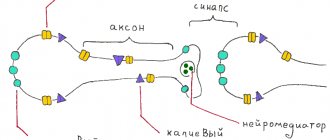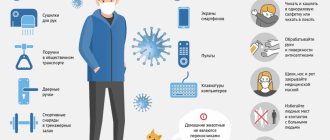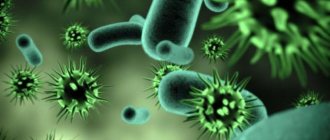What is the maximum body temperature recorded in humans?
This story took place in Atlanta (USA). The highest human temperature in the world was recorded there. American Willie Jones was admitted to a local hospital with heatstroke. The man's temperature rose to 46.7°C.
The event is marked with the date July 10, 1980. The man's condition was assessed as hyperfeverish and critically dangerous, but after just a few weeks of hospitalization he successfully recovered and went home. What prompted the heat for such a record? As we have already noted, we were talking about heat stroke. The paradox is that the air temperature that day barely exceeded 32°C with a humidity of 44%. For residents of Atlanta, this situation can be called quite familiar. For people around the world living in hot countries, this is a ridiculous temperature. For example, in Thailand the mark often exceeds 35°C with a humidity of 90%. Perhaps Willie Jones was engaged in intense physical activity on the street, which is why he was injured.
Temperature for COVID-19
The initial manifestations of coronavirus infection are similar to the course of many acute respiratory viral infections. Weakness, headache and muscle pain may come first, followed by catarrhal manifestations: nasal congestion, slight sore throat. Then, as with many acute respiratory viral infections, the temperature rises from 37˚C to 39˚C. This reaction of the body is recorded in most patients with COVID-19. The duration and level of temperature rise during infection with SARS-CoV-2 depends on many factors: the immune response, the amount of the pathogen that has entered the body, and developing complications. Some survive the infection without significant elevation.
The temperature reaction with COVID-19 is a natural response of the body that mobilizes the immune system upon contact with the virus. Therefore, taking antipyretic drugs at temperatures below 38.5˚C is not recommended, except in situations where the patient does not tolerate an increase in temperature.
As a rule, the elevated temperature lasts 1-3 days, sometimes up to 5-6 days. If it is above 37.5˚C for five days in a row, this is a reason to seek medical help, as a more severe course of the disease is possible with the development of complications.
If a young person without concomitant chronic pathology has a high fever, a doctor can be called to his home to assess his condition and prescribe appropriate therapy.
If a temperature above 37.5˚C persists for several days in people over 65 years of age or with serious concomitant diseases, you should definitely call an ambulance for transportation to a hospital.
One of the serious consequences of the new coronavirus infection is hyperinflammatory reactions. This is an excessive immune reaction that is provoked by the SARS-CoV-2 virus.
An indirect sign of the development of a hyperinflammatory reaction may be a return rise in temperature. Febrile fever above 38 degrees after the temperature has normalized is also a reason to call a doctor at home.
A sharp increase in temperature over 38˚C with a significant deterioration in health and the addition of shortness of breath is an indication for calling an ambulance and urgent hospitalization.
A feature of the course of COVID-19 is the prolonged persistence of low-grade fever (not higher than 37 degrees). Subfibrillation can persist for up to a month during the recovery process. In this case, in the absence of other symptoms and satisfactory health, complications are unlikely [9][10][11].
What does the human body temperature depend on?
It is no coincidence that the temperature of 36.6°C is set as normal. Back in the 19th century, the German physician Karl Wunderlich measured the indicator in the armpit area of 25 thousand patients about a million times. This is how the average value was derived, a deviation from which up or down is still a deviation from the norm. And yet, modern standards make amendments, allowing that the human body temperature can vary in the range from 36°C to 37.4°C.
It is now known that various factors, including age, can influence this indicator. For example, a temperature above 36.6°C in a child is quite normal. For older people, temperatures may reach lower values. High fever in children can be caused by a number of factors. For example:
- warm clothes;
- nervous overexcitation;
- eating;
- swimming in warm water.
That is why, if the child has not reached 1 year, the temperature should be closely monitored. After awakening, these indicators become noticeably lower. If the child begins to play actively, the temperature will rise.
general characteristics
Temperature readings vary in absolutely healthy people throughout the day; in the morning the values are a couple of tenths of a degree lower than in the evening.
An increase in values of more than 37° C when measured in the armpit indicates a pathology of thermoregulation. Body temperature often increases gradually. First, prodromal symptoms appear - headache, body aches, general malaise, and later - a subjective feeling of cold, muscle tremors. As the readings increase above 38° C, the chill is replaced by a strong feeling of heat, the skin is hot to the touch, and there is a bright red blush on the cheeks. The general condition of the patients worsens, they refuse to eat. Lips become dry and cracked, and severe dry mouth is a concern. The period of persistently elevated temperature lasts from several days to a month or more, depending on the cause of the fever. Normalization of thermoregulation processes can be abrupt - with severe weakness, profuse sweats and hypotension - or gradual, when the general condition remains satisfactory. The child’s temperature rises faster, up to 39-40° C in a few hours.
Fever is always combined with other symptoms that correspond to the underlying pathology. Most often observed are abdominal pain and dyspeptic disorders, signs of ARVI. If a temperature of 37° C or higher in an adult persists for more than 2 days, you should consult a doctor. If a child has a fever, medical attention is required already on the first day of elevated temperature, since in childhood the mechanisms of thermoregulation are not developed, the fever is more severe.
Does the temperature indicator depend on the environment?
There are many places in the world where the body can be very hot or, conversely, very cold. Do not forget about zones of sharply continental climate. Acclimatization is often the biggest challenge for athletes. In high mountains, temperature values can change dramatically, creating a heavy burden on the human body.
Our body is warm-blooded and can maintain its temperature regardless of environmental conditions. However, the Willie Jones case showed that heatstroke can cause great harm. The human body itself cannot withstand strong temperature loads, so changes of literally 2° already have a negative effect on the body. Confusion, dizziness, malaise and other symptoms appear.
Often, when this value increases, people remember diseases. Indeed, activation of the immune system leads to a flux of chemical reactions, which causes high fever. This is how our body creates “uncomfortable” conditions for the pathogen in order to destroy it.
Classification
According to the etiological factor, fever can be infectious - caused by bacteria, viruses and fungi, or non-infectious - with damage to internal organs, tumors, allergic reactions. Based on duration, high body temperature is classified into ephemeral (up to 3 days), acute (from 3 days to 2 weeks), subacute (2-6 weeks) and chronic (lasting over 1.5 months). In clinical practice, the classification of fever is more often used, taking into account the level of pathologically elevated temperature, according to which there is:
- Low-grade body temperature
. Temperature values are in the range of 37-38 degrees, accompanied by weakness, fatigue, and decreased ability to work. Often occurs in chronic, sluggish inflammatory processes in the body - some infections with a latent period, endocrine diseases. - Febrile body temperature
. Numerical indicators from 38° to 39° C. Its appearance indicates an active inflammatory process that triggers internal causes of fever: mechanisms of the immune system, massive production of endogenous pyrogens. It is observed in many infectious and somatic pathologies. - High (pyretic) body temperature
. Severe disturbance of thermoregulation with fever of 39-41° C. There is a sharp deterioration in condition, severe dehydration, attacks of nausea and vomiting. It is a pediatric emergency because children sometimes develop seizures. - Hyperpyretic body temperature
. An extremely serious condition when the temperature exceeds 41 degrees. Indicates a complete breakdown of the mechanisms of central thermoregulation. In addition to the usual symptoms of fever, disturbances of consciousness with delusions and hallucinations occur. The condition requires emergency assistance.
Doctors assess fever by how it fluctuates throughout the day—called a temperature curve. A constant temperature is characterized by fluctuations within 1 degree; with a weakening fever, the indicators change by 1-2 ° C, but do not reach normal temperature. With the hectic form, which is caused by purulent and septic processes, temperature fluctuations are 3-5 ° C during the day. More rare types of temperature curve include intermittent, recurrent and wavy.
What types of temperature indicators are divided into?
It must be noted that not every temperature is high. In medicine, there are clear boundaries indicating a condition. The lowest limit starts from 37°C to 38°C. It is usually called low-grade fever. Febrile starts from 38°C to 39°C. A temperature exceeding 39°C is considered high. The most dangerous value starts from 40°C.
It is the boundaries that doctors operate when making a diagnosis. Note that these indicators are not the most important in determining the state. Other symptoms play a big role. A high temperature does not at all indicate a dangerous disease - there are many examples in the world when people found themselves in a state of fever, but there was no serious threat to their lives.
A constant temperature reading above 37°C and below 37.5°C may indicate the occurrence of processes associated with serious diseases.
Treatment
Help before diagnosis
With elevated low-grade fever that lasts less than 2 days, specific treatment is not required. A long duration of symptoms indicates the presence of a pathological process, which is an indication for seeking medical help. Until the cause of the fever is determined, the patient should be given plenty of warm fluids. Physical cooling methods are used - rubbing, cold compresses. It is recommended for adults to drink antipyretics to bring down the temperature when the thermometer readings are more than 38.5 ° C; children are given antipyretics when the temperature is above 38 degrees.
Conservative therapy
Medical tactics depend on the cause of symptoms and the general condition of the patient. In case of high fever, temperature measurements in the hospital are carried out every 2-3 hours to assess the dynamics. In children, impaired thermoregulation is sometimes accompanied by convulsions, so when an elevated febrile temperature is detected, they are immediately given antipyretic medications. A prerequisite is adequate etiotropic and pathogenetic therapy, against the background of which thermometry indicators are normalized. For therapeutic purposes use:
- Antibiotics
. Medicines are selected empirically, the treatment regimen is adjusted after receiving the culture results. For massive purulent processes, combinations of 2 or 3 drugs are recommended, which are administered parenterally in high therapeutic doses. - Antiviral agents
. For influenza, specific medications are indicated to block the multiplication of the virus and speed up recovery. For the treatment of viral hepatitis, medications have been developed that reduce the viral load and alleviate the general condition. - Anti-inflammatory drugs
. Nonsteroidal drugs block the synthesis of prostaglandins and cytokines acting on the thermoregulatory center and reduce the activity of the inflammatory process. NSAIDs are used that have powerful antipyretic properties. - Glucocorticoids
. Prescribed for severe systemic autoimmune or allergic reactions that do not respond to other therapy. They are used with caution for infections, since adrenal hormones suppress the activity of the immune system. - Infusion solutions
. If the temperature is above 38° C and the patient’s condition is serious, rehydration and detoxification therapy are required. Saline solutions containing essential electrolytes are poured in. Treatment is supplemented with diuretics. - Vitamins
. In case of sluggish processes, ascorbic acid and B vitamins are used to stimulate the immune system. Metabolic drugs that improve metabolic processes in cells and have a tonic effect are effective. The products are combined with antioxidants.
Surgery
If large abscesses or foci of osteomyelitis are detected, they must be drained and the resulting cavities must be washed with antiseptic solutions. For diseases manifested by an “acute abdomen,” abdominal surgery with wide access is indicated to remove altered areas of the intestine, followed by sanitation of the abdominal cavity. For malignant tumors, radical surgical interventions are performed (removal of the tumor along with the surrounding tissue and regional lymph nodes), combined with radiation and chemotherapy.
Can the temperature fluctuate?
As we have already noted, temperature fluctuation is a natural process and depends on age. Fluctuations occur especially often when a person reaches adolescence up to 18 years of age. Various factors can influence fluctuations; physical activity always has a big influence.
It is important to know that high temperature readings may not be associated with diet, heavy physical activity or inflammation. There are many cases recorded around the world where a person who spends a long time in a stuffy room or in the heat is unable to lead normal life activities. This is due to the fact that his body has received a large temperature load and cannot restore normal heat transfer. This is how heatstroke begins. The consequences of this condition have the most detrimental effect on the brain.
When is it time to give antipyretics?
If we are talking about respiratory and other infections, as well as a common cold, it is important not to rush into taking antipyretics. The minimum threshold to which the temperature is not reduced is 38.5˚C. The only exceptions are those adults and children who, due to the individual characteristics of the body, cannot tolerate hyperthermia of any severity without convulsions.
Temperature plays an important role in the production of interferon, a protein that fights infection. This is especially important during viral infections, since only the immune system itself can overcome them. The longer the patient does not bring down the temperature, the more interferon the cells will produce, which means the body will be better armed against the pathogen.
If you take an antipyretic drug at the first sign of an increase in body temperature, the body will remain unprotected against the enemy, and the symptoms of the disease will torment the person longer.
What devices measure temperature indicators?
There is a wide variety of instruments in the world for measuring human body temperature. Thermometers still remain one of the most popular products, so global manufacturers offer a variety of models. The most famous type of thermometers in Russia are mercury thermometers. This thermometer is characterized by high accuracy, availability and is still in great demand. However, there are not as many such thermometers in the world as before, because they are quite fragile and pose a danger. The mercury they contain is poisonous. Its high degree of deodorization is dangerous and can cause harm to humans and animals.
Electronic thermometers have become more popular in the world. Their most interesting feature was the ability to measure indicators in just 30 seconds. As soon as the measurements are completed, the device will notify you with a sound signal. Alas, such devices do not provide accurate values. Therefore, manufacturers of such thermometers indicate the error in the instructions. Nevertheless, they are the ones who have gained the greatest popularity all over the world.
The most modern type of thermometers in the world are infrared. With their help, you can measure the indicator contactlessly, getting results in just 5 seconds. The error of this type of thermometer is very low and is no more than 0.5°C. A characteristic feature of the infrared thermometer is its limited use. It can only read data from a certain area, for example, the temple, forehead or ear. Moreover, the coverage is purely single, so if the device is designed to measure across the forehead, then it will be impossible to measure in another zone.
Nowadays thermal strips are becoming widespread around the world. They are widely used due to their ease of use. This strip can be applied to the forehead and in a minute it will show the result. The definition occurs along the boundaries, which helps to find out the most necessary information. Because of this, thermal strips cannot replace a full-fledged thermometer.
Types of thermometers
On the Russian pharmacy market you can purchase different types of thermometers. Three of them are the most popular:
- Mercury or maximum. Budget-friendly and easy to use. The bonus is high measurement accuracy. Widely used both at home and in various medical institutions, usually axillary. Two significant disadvantages are fragility and serious measurement time. Another disadvantage is that mercury vapor is poisonous, and therefore requires very careful handling of the thermometer.
- Electronic or digital . It appeared relatively recently, but quickly became very popular. The reasons are the speed of measurements (from half to one and a half minutes), several varieties and a very reasonable price. A bonus is the ability to use different measurement methods. The only drawback is a certain scatter of values, which demonstrates the not very high accuracy of the device.
- Infrared. An innovative and expensive thermometer. Measures temperature in a non-contact manner. The time required for measurement is only 2-5 seconds. It is not used axillarily, orally or rectally, and therefore has a limited area of use.
What are the different forms of fever?
The familiar pink (red) fever is not always a dangerous signal. She announces herself by redness of the skin, a characteristic blush on the cheeks. With red fever, the body is able to function quite normally and provide proper heat transfer.
The most serious danger is caused by white fever, which is recorded relatively rarely. It may be caused by vasospasm. With white fever, processes associated with thermoregulation fail. The skin becomes white, the hands become cold, and the thermometer shows a high temperature level. White fever is very dangerous because the heat can damage internal organs.
When to see a doctor
Best materials of the month
- Coronaviruses: SARS-CoV-2 (COVID-19)
- Antibiotics for the prevention and treatment of COVID-19: how effective are they?
- The most common "office" diseases
- Does vodka kill coronavirus?
- How to stay alive on our roads?
Young people without concomitant pathologies should seek medical help if hyperthermia exceeds 39˚C. Patients belonging to risk groups (elderly, with chronic diseases, small children, pregnant women) should call a doctor at home even with a low-grade fever of 37.9˚C and a moderate fever of 38.0-39.0˚C, for a timely appointment therapy.
An ambulance team must be called if severe intoxication develops, signs of respiratory, cardiac, renal or multiple organ failure.
Emergency medical care is required for patients with fever with any signs of damage to the central nervous system (confusion, agitation or retardation, convulsions).
If a fever above 38.5˚C is not relieved by antipyretic drugs in recommended age-specific dosages within 48 hours, it is also worth calling an ambulance so that doctors can provide emergency care and resolve the issue of hospitalization [12].
What consequences can high temperature cause?
There are 3 symptoms that make themselves felt when you have a high fever. These are nausea, pressure and diarrhea. The second should be focused on separately. Fever affects hemodynamics, leading to increased heart rate. Acceleration of blood flow leads to dilation of blood vessels and increased blood pressure. In this case, the indicators, as a rule, do not exceed 140/90 mm Hg. Increased blood pressure is typical for people who have a fever of 38.5°C. Sometimes the pressure may, on the contrary, decrease. You should not take medications that affect blood pressure, as the levels will level off on their own after the fever goes away.
Anyone who suffers from hypertension should be seriously wary, since even a slight increase in temperature can lead to big problems. Those suffering from hypertension need to take antipyretics. Anyone who suffers from arrhythmia, atherosclerosis, diabetes mellitus, or heart failure should also exercise caution. If low pressure is recorded at a high temperature (especially in the low-grade range), then pathology may occur. There is no need to be scared in advance, you just need to undergo a full examination.
Can a fever occur without other symptoms? If you experience an increase in temperature, but there are no other symptoms, you should immediately go for a medical examination. However, a similar condition can occur with nervous disorders, overwork, constant stress, hypothermia and heavy physical exertion. If the increase in temperature is temporary, there is no need to worry; if the condition persists, it is recommended to consult a specialist.
What are the dangers of excessive temperature rise?
In addition to the detrimental effect on pathogenic microorganisms and stimulation of the immune response, high temperature has a number of negative effects.
Hyperthermia changes metabolism and causes loss of water and salts. When the body overheats, the sweating process increases significantly. Loss of fluid is accompanied by thickening of the blood, increasing the risk of blood clots.
High temperatures pose a great danger to people with cardiovascular disease. When it increases by 1˚C, the pulse increases by 8-10 beats per minute. The heart works at a high frequency, under unfavorable conditions of blood thickening and metabolic disorders. Sometimes, during hyperthermia in patients with cardiac pathology, rhythm disturbances are recorded, which is due to activation of the sympathetic-adrenal system and electrolyte imbalance.
In patients with fever, frequent shallow breathing is observed: the frequency of respiratory movements increases, but the depth of inspiration decreases. Not enough oxygen reaches the organs and tissues, and hypoxia develops.
High temperature accelerates redox processes, which means that the cells' need for oxygen sharply increases: with an increase in temperature by 0.6˚C, the level of basal metabolism increases by approximately 10%. Due to the lack of oxygen, a large number of “acidic” metabolites are formed in the cells, which disrupt the function of tissues and organs. Such a failure of metabolic processes, leading to “acidification” of the body, is called “acidosis.” This is why fever can be accompanied by intoxication. This is most often observed in children, but if the inflammatory process continues for a long time, intoxication also occurs in adults.
When the activity of metabolic processes increases, carbohydrate reserves are used first; after their reserves are exhausted, fats and proteins are used. As a result of increased protein breakdown, their loss is possible up to 300–400 grams per day. Therefore, during fever, it is necessary to give children easily digestible carbohydrates (for example, juices).
With hyperthermia, the function of the gastrointestinal tract is inhibited: appetite decreases, enzyme secretion decreases, motility and absorption processes are impaired. As a result, the development of malabsorption syndrome and constipation is possible. This has a particularly adverse effect on elderly patients.
Patients with high body temperature are at risk of dangerous conditions of the central nervous system, due to increased permeability of the blood-brain barrier and insufficient oxygen supply to the brain. Hyperthermia may be accompanied by agitation. The most dangerous complication occurring in children with an immature thermoregulation system is febrile seizures [3][4][5].
Why is it dangerous when the temperature rises above 38°C?
If a high temperature occurs, then this is a sure sign of a sharply worsening pathology. In 99% of cases this is an inflammatory process. If the condition is long-term, it means that the malfunction in the body is serious, so you cannot do without qualified medical care. The patient's body reacts to the infection by stimulating the immune system, accelerating metabolism, producing antibodies, and increasing blood circulation.
At this time, microbes lose activity, but the respiratory and cardiac systems bear an increased load. The nervous system takes a hit, the body loses water. If the condition does not change, the temperature remains, then blood circulation in the internal organs will deteriorate. The most dangerous stage is when the indicator rises above 41°C. Before the doctor arrives, the patient must take antipyretics for fever.
What to do if a fever appears after vaccination?
Fever after vaccination is not always a complication. Often its appearance is a normal reaction of the body to a foreign body, pathogens. The immune system receives a load and intensifies the fight against the disease, which occurs in a mild form. How the body will react to the introduction of substances, no physician can make an accurate prediction. Not everyone gets sick after vaccination.
You should remember about contraindications to vaccination and do not vaccinate during or after suffering from infectious diseases, exacerbations of chronic diseases, allergies, complications from previous vaccination, and other cases that your doctor will remind you about. For a full consultation, you can contact JSC “Medicine” (clinic of academician Roitberg).
Is it necessary to bring down the temperature of 37 °C in an adult?
Fever itself is a protective reaction of the body8, so antipyretic drugs should be taken only as indicated - for adults at a temperature above 38.5 °C and/or muscle and joint pain due to ARVI12.
For ARVI it is recommended12:
- ● bed rest;
- ● drinking plenty of water;
- ● a diet rich in vitamins;
- ● symptomatic treatment (to relieve nasal congestion, cough and other symptoms of a cold);
- ● taking antiviral drugs.
Anaferon®11 lozenges can be used as part of complex therapy for ARVI. The active ingredient of the drug is antibodies to interferon gamma. Their antiviral and immunomodulatory effects are associated with the activation of natural immune factors that help the body fight viruses11,13. Anaferon ® is indicated for the treatment of influenza and other acute respiratory viral infections11. Its use as part of complex therapy helps reduce the duration of the main symptoms of the disease by 1.5 times or more13. Also, Anaferon ® can be used during the ARVI epidemic season as a prophylactic agent for 3 months11.
Up to contents
How and why to measure basal temperature?
Basal temperature is measured at the moment of awakening. It helps determine the day of ovulation to plan conception and try to determine the sex of the unborn child. Basal thermometry is carried out in the first minutes after sleep, before physical activity. The oral cavity, rectum, and vagina are suitable for measurements. The gynecologists of JSC “Medicine” (clinic of academician Roitberg) in the Central Administrative District will tell you more about the methods for determining the day of ovulation. After consultation, you will be able to plan your pregnancy down to the day, and also try to influence the gender of your unborn baby.










